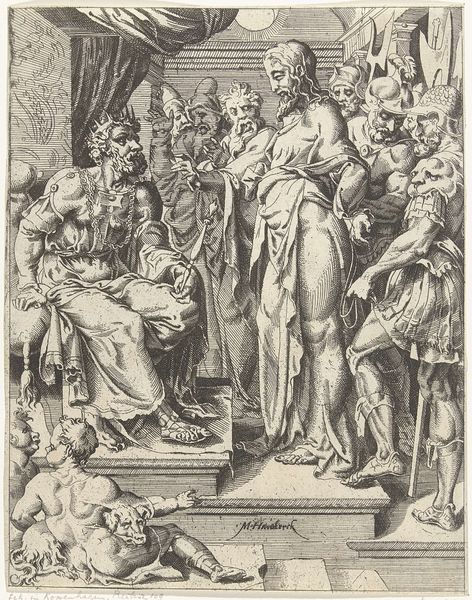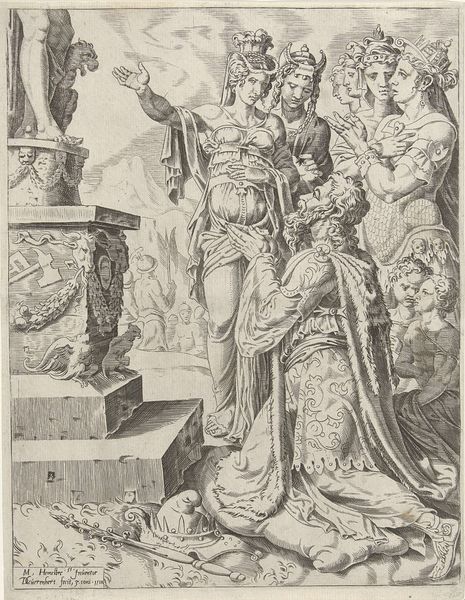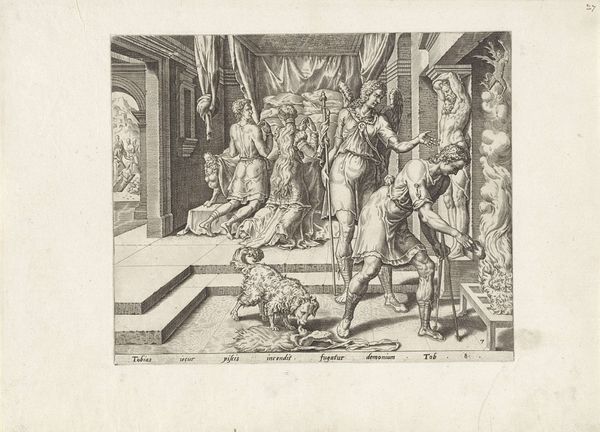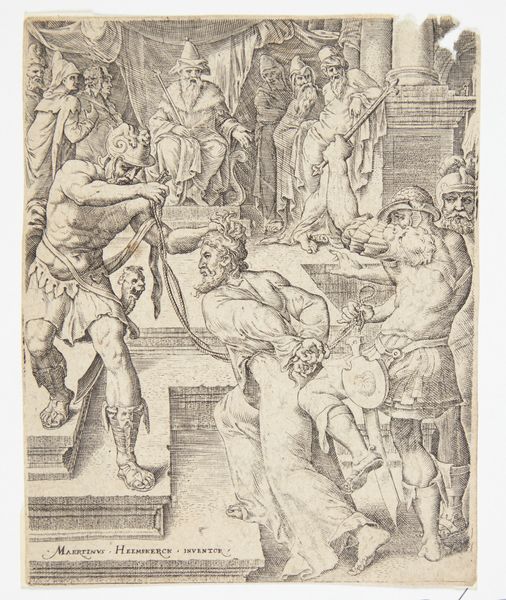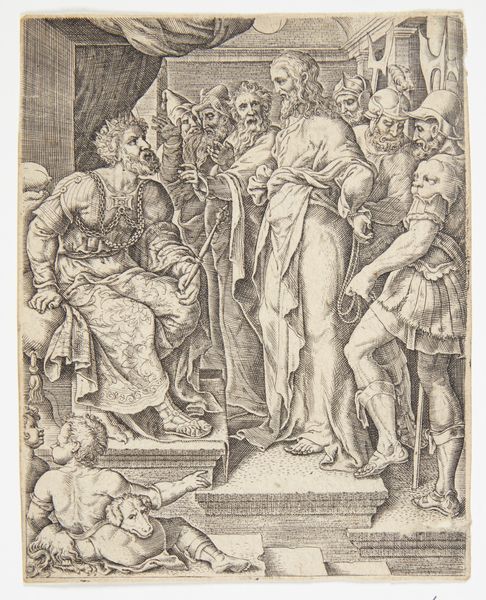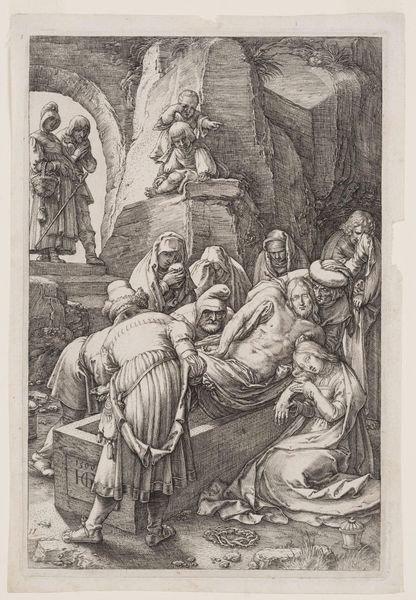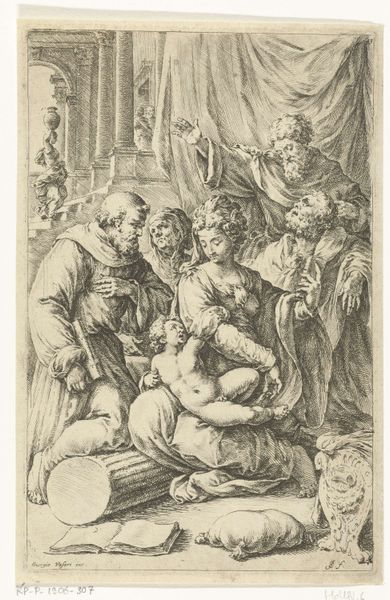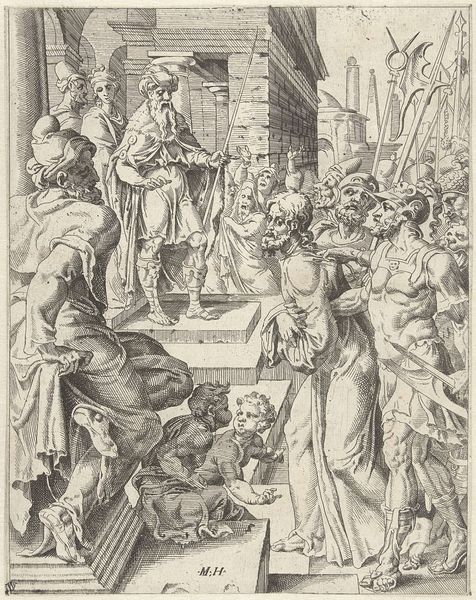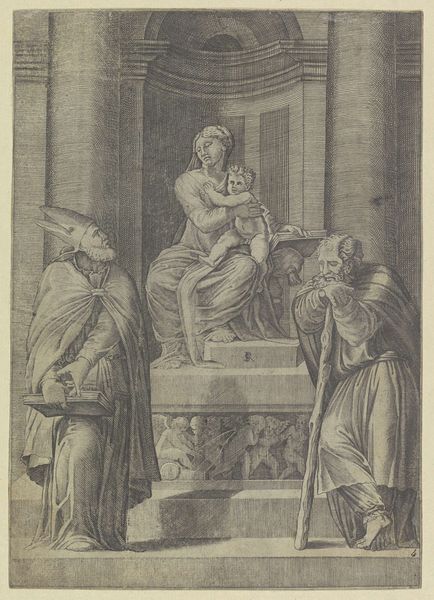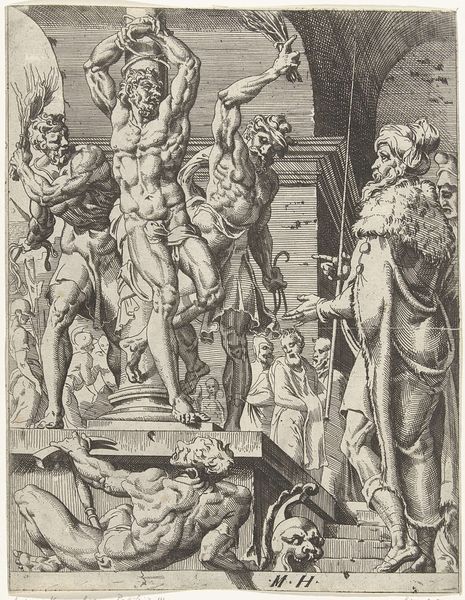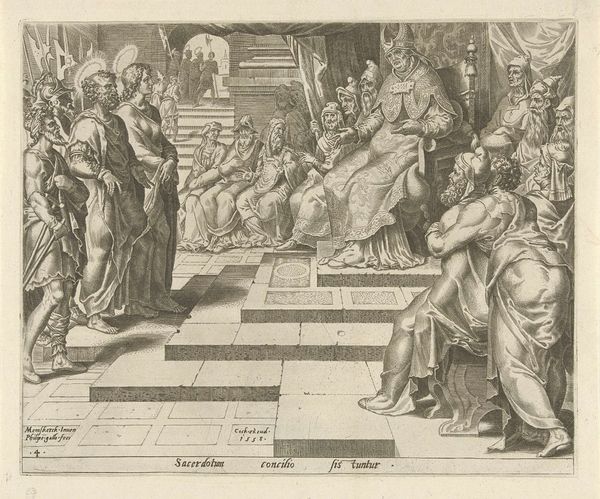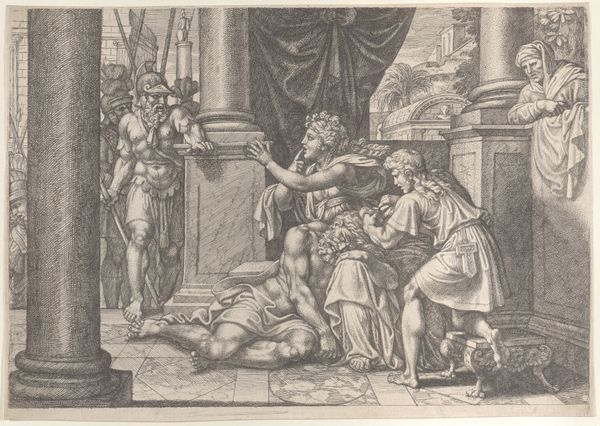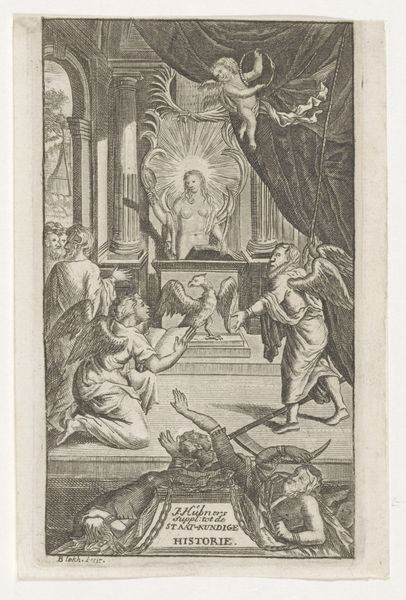
print, etching, engraving
#
portrait
#
ink drawing
# print
#
etching
#
figuration
#
11_renaissance
#
history-painting
#
northern-renaissance
#
engraving
Dimensions: height 351 mm, width 258 mm
Copyright: Rijks Museum: Open Domain
Editor: So, this is "Christus aan het kruis" – Christ on the Cross – from 1568, made by Cornelis Cort. It’s currently held in the Rijksmuseum, and it's an etching or engraving print. The dramatic composition and stark lines create a sense of solemnity, and the way the figures are arranged is almost theatrical. What do you see when you look at it? Curator: The visual relationships enacted are of great significance. The print displays a keen attention to line and form, which dictates the overall visual narrative. Note the artist’s command in varying line thickness to produce depth and shadow. The hatching technique creates tonal gradations defining the figure's musculature, and delineating fabric folds, thus producing dramatic contrasts of light. Editor: So, the use of line is essential for its impact, right? But what about the figures and how they relate to each other? Curator: Precisely! The linear vocabulary guides the viewer’s eye. Examine how Cort uses contrasting textures – the smooth skin, the rough stone, and the sharp weaponry. These variances construct a compelling dialogue through pure form. The strategic organization within the picture plane orchestrates and transmits the piece's pathos, with each figure contributing as an aesthetic building block. What message do you think the arrangement itself attempts to convey? Editor: The seated figure on the steps certainly directs our attention to those in front and behind. That hierarchy makes a formal distinction and also informs on relationships between individuals in the artwork. Curator: Exactly. The power lies not only in the depicted scene but in Cort’s deliberate structuring of it. What begins as content, promptly transmutes to construct; to architectural organization on its own merit. Editor: I'm beginning to appreciate how the formal elements enhance the emotional power and underscore the storytelling, and I had previously attributed that narrative force solely to the biblical story being displayed. Thank you for opening my eyes to this level of artistic meaning. Curator: My pleasure. Keep questioning what constitutes our individual emotional reaction; and continue dissecting what produces visual harmony. Both shall carry you through any great exhibition.
Comments
No comments
Be the first to comment and join the conversation on the ultimate creative platform.
